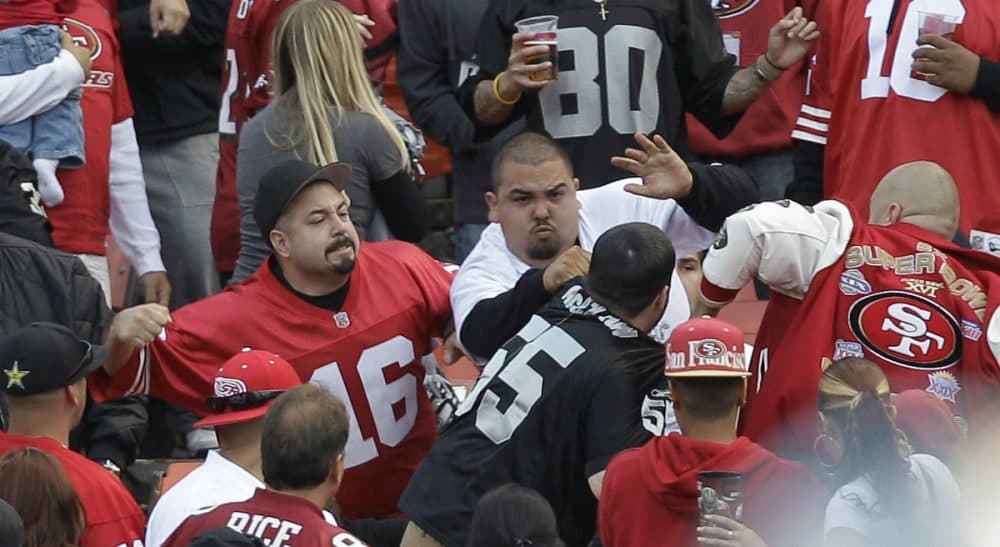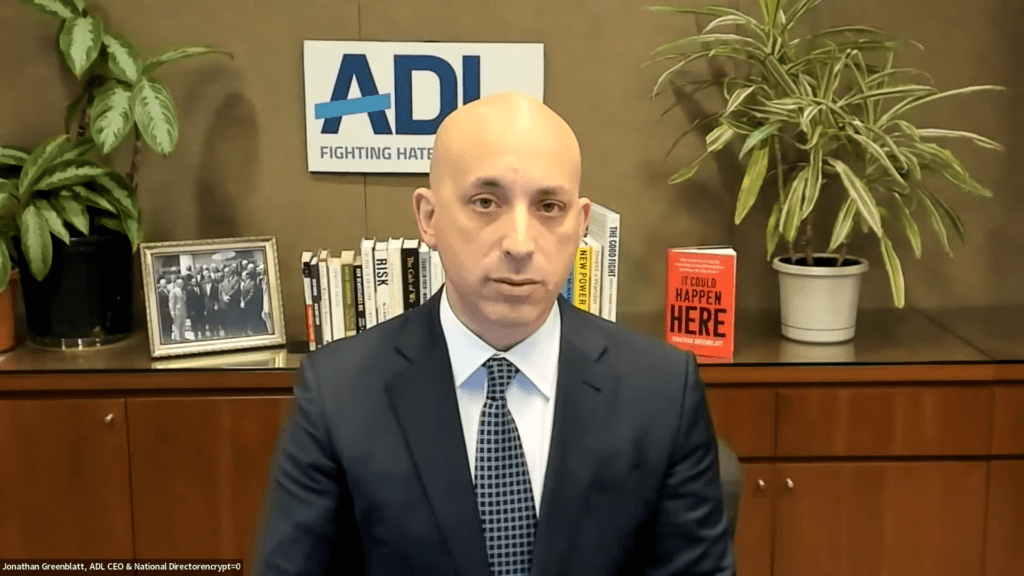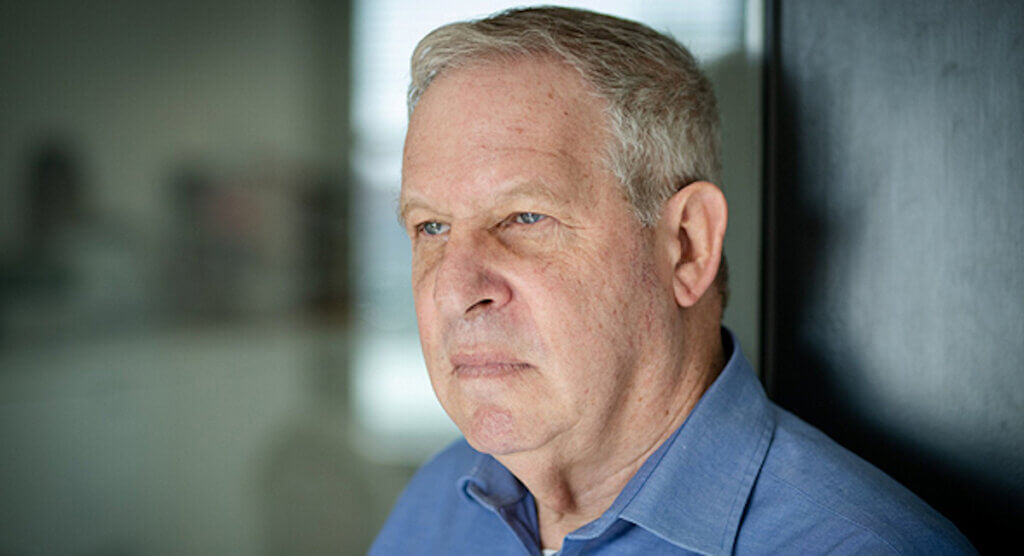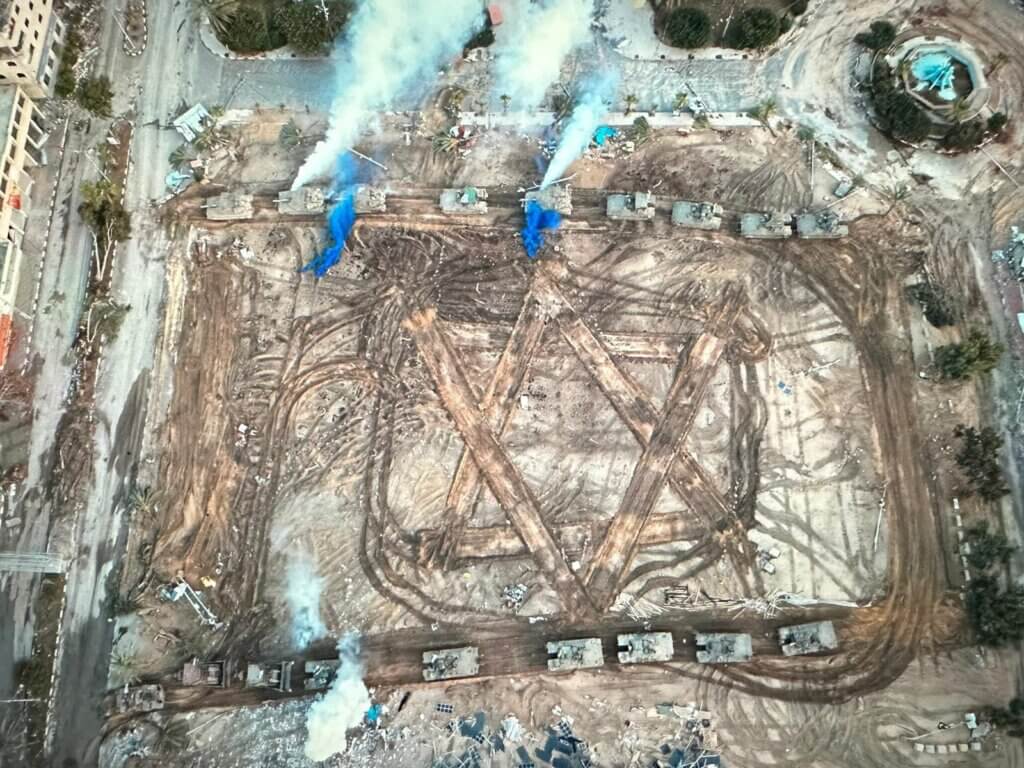I thought my mother was a quintessentially maternal woman. But at one of my college’s football games, just before the last crucial goal line play, she yelled out her wish for the rival fullback: “Kill him! Kill him!” she shouted.
My father, always much more contained, leaned toward her and said quietly, “Pauline, that’s somebody’s son.”
Many years later, as a psychoanalyst and sports fan, I continue to wonder about this dichotomy among fans: we view our team's athletic rivals as the enemy, but they are also us. Consider our reaction to the friendly chat between the first baseman and the new base runner whose single just knocked in a crucial run; the hug between two spent heavyweights who’ve been pounding one another for 15 rounds; the lingering chat at midfield between two opposing football players after the last play. Did they go to high school together? Were they teammates on a youth team? Are they perchance cousins?
Serious sport has nothing to do with fair play. It is bound up with hatred, jealousy, boastfulness, disregard of all rules, and sadistic pleasure in violence. In other words, it is war without shooting.GEORGE ORWELL
When my kids were young, I coached their youth soccer teams. After every game the teams would line up to shake hands. Depending on the players’ age and maturity, this gesture was empty at worst and enforced proto-sportsmanship at best. I’d have to check to make sure the younger boys weren’t spitting on their hands to spite their opponents.
The handshakes are a ritual acknowledgement that, fundamentally, opponents are necessary for the game to take place and to make the play transcendent.
WBUR is a nonprofit news organization. Our coverage relies on your financial support. If you value articles like the one you're reading right now, give today.
George Orwell notably observed, “Serious sport has nothing to do with fair play. It is bound up with hatred, jealousy, boastfulness, disregard of all rules, and sadistic pleasure in violence. In other words, it is war without shooting.”
If that sounds hyperbolic, we must acknowledge how easy it is for us to excuse the professional foul by our team. A bean ball by an opposing pitcher we call a headhunter. But when our guy throws it it's just a “brush-back,” a time-honored warning. We see our linebacker as a hard player; but last year, when he played for our rival, he was a thug. Did he have a criminal record then? Maybe, but now we imagine him redeemed.
Studies have shown that violence in the game, particularly if perceived as unfair, increases the likelihood of violent acts by spectators. Fan violence is further magnified by strong identification with the team, underlying racial and ethnic tensions, social alienation, alcohol consumption, and predominance of young men in the crowd. The 2011 savage beating of Bryan Stow, a Giants fan, by two Dodger fans is a recent and egregious example.
Most of us seek the spectacle of the game to escape the struggles and banality of everyday life: we want to see exceptional displays of skill, strategy, teamwork, character, and yes, aggression, but within the rules of the game, what researcher Jennings Bryant termed “sanctioned violence.” And that’s the purpose of penalties: to keep aggression in check.
ADVERTISEMENT
Spectators recognize a spectrum for permissible vs. unacceptable aggression in sport, and we’re gripped by the tension between them. To disavow our interest in the varied displays of aggression would be hypocritical, denying a core aspect of our complex humanity. Experimental evidence in mice supports Freud’s hypothesis that aggression is rewarding in itself, akin to sex; and it’s mediated by the same brain neurochemistry.
As the president of Ultimate Fighting Championship (UFC), Dana White, tells CNN: “Everyone loves a fight. It's in our DNA ... if you're in an intersection and there's a basketball game on one corner, a soccer game on another, a baseball game on the third, and a fight on the fourth, everyone will go watch the fight.”
But we want to see that aggression channeled, contained, ‘sublimated’ as we analysts say, on artful but safe display. Jennings Bryant concludes that the fans’ moral judgment of the lawfulness of their team’s violent actions mitigates the satisfaction felt even at the defeat of a hated rival team.
When players genuinely recognize and acknowledge one another, it marks the game for us as a humane competition.
Since we seek organized displays of aggression, we cannot deny our complicity when players are routinely hurt in the service of our entertainment. Can we convince ourselves that the brain injury that so often and predictably comes from playing in the NFL is a side matter, separate from our enjoyment of big hits? Do we pretend that the New Orleans Saints’ bounty system for disabling opponents was an aberration? Don’t we feel queasy at the promotion of games as wars between enemies? Are we devoid of responsibility for uncritically supporting the NFL, which dangles enormous sums in front of players some of whom have little more to market than their capacity to inflict or bear life-altering injury?
We need to balance our appetite to watch aggressive sports action with the other side of our natures, the part that wants to affirm our identification with the humanity and vulnerability of the players on both sides. When players genuinely recognize and acknowledge one another, it marks the game for us as a humane competition. That exchange at first base tempers our sense of blood rivalry and reminds us that it is actually a game. We can indulge in the fantasy of do-or-die because we’re reassured that those are not really the stakes.
Related:
2 Men Sentenced In Brutal Attack On Giants Fan
Bill Littlefield: Can We Really Expect Football Culture To Change If We Don’t Want It To?psychology

Leonard L. Glass Cognoscenti contributor
Leonard L. Glass, M.D. is a psychiatrist and psychoanalyst. He is also an associate clinical professor of psychiatry at Harvard Medical School and a senior attending psychiatrist at McLean Hospital.
Ia904703.us.archive.org












 PALESTINIAN WORKERS, WHO WERE STRANDED IN ISRAEL SINCE THE OCTOBER 7 ATTACKS, WALK NEAR THE RAFAH BORDER CROSSING WITH EGYPT AS THEY MAKE THEIR WAY BACK INTO GAZA STRIP FROM THE KEREM SHALOM COMMERCIAL BORDER CROSSING, NOVEMBER 3, 2023. (PHOTO: STR/APA IMAGES)
PALESTINIAN WORKERS, WHO WERE STRANDED IN ISRAEL SINCE THE OCTOBER 7 ATTACKS, WALK NEAR THE RAFAH BORDER CROSSING WITH EGYPT AS THEY MAKE THEIR WAY BACK INTO GAZA STRIP FROM THE KEREM SHALOM COMMERCIAL BORDER CROSSING, NOVEMBER 3, 2023. (PHOTO: STR/APA IMAGES)